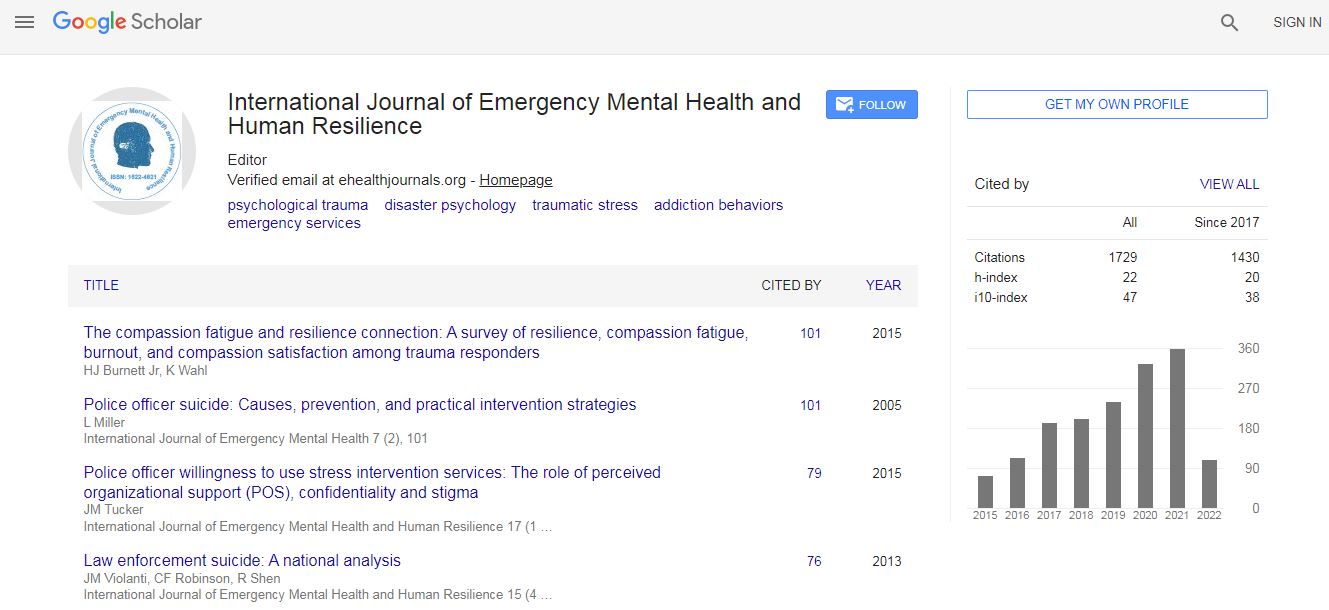Our Group organises 3000+ Global Conferenceseries Events every year across USA, Europe & Asia with support from 1000 more scientific Societies and Publishes 700+ Open Access Journals which contains over 50000 eminent personalities, reputed scientists as editorial board members.
Open Access Journals gaining more Readers and Citations
700 Journals and 15,000,000 Readers Each Journal is getting 25,000+ Readers
Google Scholar citation report
Citations : 4948
Indexed In
- Index Copernicus
- Google Scholar
- CiteFactor
- Publons
- Pubmed
- science Gate
- scispace
- world cat
Useful Links
Related Subjects
Share This Page
Using Technologies to Restore Functional Movement in Neurological Patients
38th International Conference on Psychiatry and Mental Health
Paolo Milia
University of Perugia, Italy
ScientificTracks Abstracts: Int J of Emer Ment Health
Abstract
The recovery of patients affected by CNS lesion is like a learning process exploiting preserved sensorimotor circuits. The best recovery is related by providing appropriate proprioceptive input to the spinal cord with the goal of maximally engaging preserved neural circuits. The extent of recovery depends on the severity of CNS damage and the individual capacity of a patient to regain a function. Cognition and motivation are important contributors to this learning and must therefore be considered during rehabilitation. But first of all we need to understand that the goal of rehabilitation is not exclusively to re-establish ├ó┬?┬?normal├ó┬?┬? movement patterns, but to enable well-organized movements to achieve optimal outcome in mobility and independence during activities of daily living (ADL) for the individual patient. Robotic rehabilitation is a young science that is rapidly infiltrating the clinical environment. In 1994 with development of MIT-MaNUS5, robotic device for the upper limb rehabilitation, started the robotic era of neurorehabilitation. In the same year the introduction of Lokomat, a Body Weight Supported Treadmill Training (BWSTT) assisted by a gait orthosis, represented the first pioneering grounded exoskeleton. Exoskeleton is an outer wearable skeleton that allows people with paralysis of the lower limbs to walk. Neurological diseases such as traumatic brain injury, stroke and spinal cord injury cause serious consequences both at physiological and motor levels. Our recent studies have underlined the positive effects of using exoskeletons both in spinal cord injuries and stroke patients, affecting in terms of positive results the two main domains of our brain: psychological and sensory-motor.Biography
Paolo Milia is a neurologist at one of our largest and longest standing facilities, Istituto Prosperius Tiberino in Umbertide. He was able to visit multiple universities to speak about his extensive work on robotics and their role with rehab. We thank University of Illinois Chicago, University of Montana, Pacific University and Chapman University along with the DCE’s and staff who made this a reality! And of course, Dr. Milia for coming all this way to share his knowledge and expertise. We hope to continue to inspire DPT students around the nation.

 Spanish
Spanish  Chinese
Chinese  Russian
Russian  German
German  French
French  Japanese
Japanese  Portuguese
Portuguese  Hindi
Hindi 